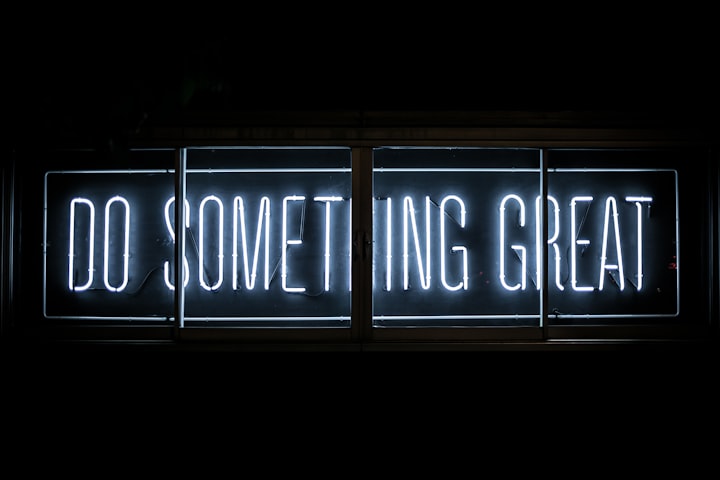The Influence of Military Strategy on Business Strategy
Analyzing the Smithsonian Institution's business strategy using Sun Tzu's 'The Art of War'
When thinking of war and business strategy, the end goal seems to be the same, and that is to win. In order to do so, every business needs to know their competition, build a strong team, and instill confidence within their team members in order to be victorious in their specific market.
There are many parallels to military and business, the people engaged, and the ways in which these entities operate in order to meet goals and objectives. Even in places like The Smithsonian Institution, the tactics outlined in Sun Tzu's The Art of War holds some truth in how the organization runs its business.
One of the main strategies used in war is to know your opposition. In the video The Art of War - Top 5 Insights for Marketing & Business Strategy, they reference a concept of Sun Tzu’s The Art of War that talks about this tactic. When thinking about The Smithsonian Institution, because of the broad range of museums and educational centers, local museums like Madame Tussauds or the International Spy Museum can be considered their competition in the arts and humanities sphere. On the national scale, places like The Metropolitan Museum of Art in NYC or The Broad Museum in Los Angeles could also be considered in opposition of The Smithsonian. Although they serve different markets across the globe, it is good to know how your arts institution is attracting new visitors, the types of art installations that visitors are interacting with, and leveraging innovation throughout.
(Source: Minute Marketing, YouTube)
With the vast amount of competition within the arts and humanities sphere, is important for the Smithsonian Institution to understand the landscape of their market and what types of programs and exhibitions other arts and education institutions are leveraging to better their user experiences online and the physical spaces they operate. Since this is a non-profit organization funded by the federal government, The Smithsonian Institution also knows that they’ve beat out their competition in terms of admission to these centers, expanding their work force and sourcing artifacts for display. Despite this, though, they should still be paying attention to how other museums are bringing in donations to their respective institutions. Finally, The Smithsonian is doing a great job in analyzing their global market, as outlined in their strategic growth plan. They are working to study how other arts and culture institutions are keeping people engaged with exhibitions by integrating technology and other modern innovations. In studying these different cultural markets, the Institution is learning how to communicate with their international audiences authentically through some of their more globalized or culture-specific exhibitions.
On the other hand, another military strategy is to “Not Rely on the Enemy Not Attacking, Rather Be Sure of Your Own Defensibility of Your Own Position” Although is beneficial to know who your competitors are, sometimes it’s best to not directly compete with them in an aggressive manner. In “Nondisruptive Creation: Rethinking Innovation and Growth,” authors W. Chan Kim and Renée Mauborgne emphasize that when companies focus so much on creating to disrupt and destroy competition, it keeps them stagnant and not capable to fully embrace the power of creation and execution of innovative ideas. Smithsonian is a great example of this. Because they are the largest of its kind and are also a non-profit organization, there isn’t a sense of urgency to compete with the market. Instead, they can focus their resources and attention internally in order to sustain their facilities, artifacts, and technology in order to create a much more interactive and fulfilling visitor experience.
Finally, the other military strategy Sun Tzu outlines "is leveraging the talent of your forces." Having one person thinking for the group, or not having a diversified set of ideas and talent can be damaging for a company. Businesses should aim to maximize the creativity and knowledge of its employee network through collaboration. In any team, you want the most innovative, highly-skilled individuals working for you. In turn, leaders must demonstrate a willingness to be open-minded and curious to learn from their team members. As outlined in Smithsonian's Five-Year Strategic Plan, they understand that the world is changing. As the world evolves, it becomes more diverse, so they want to ensure that they are hiring the best people to execute more robust, informative exhibitions that reflect the experience of all Americans and global citizens. In addition to this, knowing your employees' strengths and weaknesses and understanding them on a more interpersonal level can also give better insight on how to place them so that they can maximize their own talents.
As a whole, The Smithsonian Institution is succeeding in its efforts to be the largest arts and humanities institution in the world. Not only are they one of the few cultural hubs with free admission, but the resources and museums that are housed under their umbrella can resonate with different audiences from all professional, cultural, and age backgrounds.
--
I am a creative multi-hyphenate with a strong passion for the arts. To check out more of my journey and the different art exhibits and events I go to in real-time, follow me on Instagram at @erparrish_
If you would like to read more of my poetry and prose, as well as see some of my visual photography all in one place follow me on Instagram at @wordsbyep_
About the Creator
Earica (EP) Parrish
Maneuvering through life with purpose and integrity, hoping to leave a meaningful impact on others✨
IG: @erparrish_ ⚡ www.erparrish.com







Comments
There are no comments for this story
Be the first to respond and start the conversation.